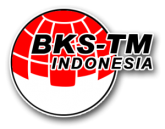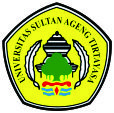The pH Effect on Dye Waste Elimination Using Photocatalytic and Electrocoagulation Combination Methods
Abstract
Keywords
Full Text:
PDFReferences
Abdullah, M., Kamarudin, S.K., 2017. Titanium dioxide nanotubes (TNT) in energy and environmental applications: An overview. Renewable and Sustainable Energy Reviews 76, 212–225. https://doi.org/10.1016/j.rser.2017.01.057
Adán, C., Marugán, J., Sánchez, E., Pablos, C., van Grieken, R., 2016. Understanding the effect of morphology on the photocatalytic activity of TiO2 nanotube array electrodes. Electrochimica Acta 191, 521–529. https://doi.org/10.1016/j.electacta.2016.01.088
Akter, S., Islam, Md.S., 2022. Effect of additional Fe2+ salt on electrocoagulation process for the degradation of methyl orange dye: An optimization and kinetic study. Heliyon 8, e10176. https://doi.org/10.1016/j.heliyon.2022.e10176
Babar, M., Munir, H.M.S., Nawaz, A., Ramzan, N., Azhar, U., Sagir, M., Tahir, M.S., Ikhlaq, A., Mohammad Azmin, S.N. huda, Mubashir, M., Khoo, K.S., Chew, K.W., 2022. Comparative study of ozonation and ozonation catalyzed by Fe-loaded biochar as catalyst to remove methylene blue from aqueous solution. Chemosphere 307, 135738. https://doi.org/10.1016/j.chemosphere.2022.135738
Behloul, M., Grib, H., Drouiche, N., Abdi, N., Lounici, H., Mameri, N., 2013. Removal of Malathion Pesticide from Polluted Solutions by Electrocoagulation: Modeling of Experimental Results using Response Surface Methodology. Separation Science and Technology 48, 664–672. https://doi.org/10.1080/01496395.2012.707734
Butler, E., Hung, Y.-T., Yeh, R.Y.-L., Suleiman Al Ahmad, M., 2011. Electrocoagulation in Wastewater Treatment. Water 3, 495–525. https://doi.org/10.3390/w3020495
Carmen, Z., Daniel, S., 2012. Textile Organic Dyes – Characteristics, Polluting Effects and Separation/Elimination Procedures from Industrial Effluents – A Critical Overview, in: Puzyn, T. (Ed.), Organic Pollutants Ten Years After the Stockholm Convention - Environmental and Analytical Update. InTech. https://doi.org/10.5772/32373
Darsinou, B., Frontistis, Z., Antonopoulou, M., Konstantinou, I., Mantzavinos, D., 2015. Sono-activated persulfate oxidation of bisphenol A: Kinetics, pathways and the controversial role of temperature. Chemical Engineering Journal 280, 623–633. https://doi.org/10.1016/j.cej.2015.06.061
Girma, S., Taddesse, A.M., Bogale, Y., Bezu, Z., 2023. Zeolite-supported g-C3N4/ZnO/CeO2 nanocomposite: Synthesis, characterization and photocatalytic activity study for methylene blue dye degradation. Journal of Photochemistry and Photobiology A: Chemistry 444, 114963. https://doi.org/10.1016/j.jphotochem.2023.114963
Hu, G., Yang, Jian, Duan, X., Farnood, R., Yang, C., Yang, Jie, Liu, W., Liu, Q., 2021. Recent developments and challenges in zeolite-based composite photocatalysts for environmental applications. Chemical Engineering Journal 417, 129209. https://doi.org/10.1016/j.cej.2021.129209
Keramati, M., Ayati, B., 2019. Petroleum wastewater treatment using a combination of electrocoagulation and photocatalytic process with immobilized ZnO nanoparticles on concrete surface. Process Safety and Environmental Protection 126, 356–365. https://doi.org/10.1016/j.psep.2019.04.019
Kustiningsih, I., Purwanto, W.W., 2014. SYNTHESIS OF TITANIA NANOTUBES AND TITANIA NANOWIRES BY COMBINATION SONICATION-HYDROTHERMAL TREATMENT AND THEIR PHOTOCATALYTIC ACTIVITY FOR HYDROGEN PRODUCTION. International Journal of Technology 5.
Kustiningsih, I., Slamet, S., Purwanto, W.W., 2015. Synthesis of TiO2 nanotubes by using combination of sonication and hydrothermal treatment and their photocatalytic activity for hydrogen evolution. Reaktor 15, 204–211.
Mahamud, M., Taddesse, A.M., Bogale, Y., Bezu, Z., 2023. Zeolite supported CdS/TiO2/CeO2 composite: Synthesis, characterization and photocatalytic activity for methylene blue dye degradation. Materials Research Bulletin 161, 112176. https://doi.org/10.1016/j.materresbull.2023.112176
Mamaghani, A.H., Haghighat, F., Lee, C.-S., 2020. Role of titanium dioxide (TiO2) structural design/morphology in photocatalytic air purification. Applied Catalysis B: Environmental 269, 118735. https://doi.org/10.1016/j.apcatb.2020.118735
Mecha, A.C., Chollom, M.N., 2020. Photocatalytic ozonation of wastewater: a review. Environ Chem Lett 18, 1491–1507. https://doi.org/10.1007/s10311-020-01020-x
Mustafa, F.H.A., Gad ElRab, E.Kh.M., Kamel, R.M., Elshaarawy, R.F.M., 2023. Cost-effective removal of toxic methylene blue dye from textile effluents by new integrated crosslinked chitosan/aspartic acid hydrogels. International Journal of Biological Macromolecules 248, 125986. https://doi.org/10.1016/j.ijbiomac.2023.125986
Muthuvel, A., Jothibas, M., Mohana, V., Manoharan, C., 2020. Green synthesis of cerium oxide nanoparticles using Calotropis procera flower extract and their photocatalytic degradation and antibacterial activity. Inorganic Chemistry Communications 119, 108086. https://doi.org/10.1016/j.inoche.2020.108086
Pratiwi, R., Dilla, D.S., Slamet, 2022. Effect of Electric Voltage on Simultaneous Electrocoagulation-Photocatalysis Process in Removal of Ciprofloxacin-Methylene Blue Mixture and Hydrogen Recovery. Asian Journal of Chemistry 34, 1145–1150. https://doi.org/10.14233/ajchem.2022.23614
Rangel-Peraza, J.G., Prado, M.A.R., Amabilis-Sosa, L.E., Bustos-Terrones, Y.A., Ramírez-Pereda, B., 2020. Malathion Removal through Peroxi-Electrocoagulation and Photocatalytic Treatments. Optimization by Statistical Analysis. International Journal of Electrochemical Science 15, 8253–8264. https://doi.org/10.20964/2020.08.08
Ratnawati, Gunlazuardi, J., Slamet, 2015. Development of titania nanotube arrays: The roles of water content and annealing atmosphere. Materials Chemistry and Physics 160, 111–118. https://doi.org/10.1016/j.matchemphys.2015.04.013
Roy, P., Berger, S., Schmuki, P., 2011. TiO2 Nanotubes: Synthesis and Applications. Angewandte Chemie International Edition 50, 2904–2939. https://doi.org/10.1002/anie.201001374
Safajou, H., Khojasteh, H., Salavati-Niasari, M., Mortazavi-Derazkola, S., 2017. Enhanced photocatalytic degradation of dyes over graphene/Pd/TiO2 nanocomposites: TiO2 nanowires versus TiO2 nanoparticles. Journal of Colloid and Interface Science 498, 423–432. https://doi.org/10.1016/j.jcis.2017.03.078
Saleh, T.A., Gupta, V.K., 2012. Photo-catalyzed degradation of hazardous dye methyl orange by use of a composite catalyst consisting of multi-walled carbon nanotubes and titanium dioxide. Journal of Colloid and Interface Science 371, 101–106. https://doi.org/10.1016/j.jcis.2011.12.038
Shayegan, Z., Lee, C.-S., Haghighat, F., 2018. TiO2 photocatalyst for removal of volatile organic compounds in gas phase – A review. Chemical Engineering Journal 334, 2408–2439. https://doi.org/10.1016/j.cej.2017.09.153
Singh, J., Juneja, S., Soni, R.K., Bhattacharya, J., 2021. Sunlight mediated enhanced photocatalytic activity of TiO2 nanoparticles functionalized CuO-Cu2O nanorods for removal of methylene blue and oxytetracycline hydrochloride. Journal of Colloid and Interface Science 590, 60–71. https://doi.org/10.1016/j.jcis.2021.01.022
Sulaiman, F., Sari, D.K., Kustiningsih, I., 2017. The influence of ozone on the photocatalytic degradation of phenol using TiO2 photocatalyst supported by Bayah natural zeolite, in: AIP Conference Proceedings. AIP Publishing.
Xu, X., Xue, P., Gao, M., Li, Y., Xu, Z., Wei, Y., Zhang, Z., Liu, Y., Wang, L., Liu, H., Cheng, B., 2023. Assembled one-dimensional nanowires for flexible electronic devices via printing and coating: Techniques, applications, and perspectives. Advances in Colloid and Interface Science 102987. https://doi.org/10.1016/j.cis.2023.102987
You, M., Kim, T.G., Sung, Y.-M., 2010. Synthesis of Cu-Doped TiO2 Nanorods with Various Aspect Ratios and Dopant Concentrations. Crystal Growth & Design 10, 983–987. https://doi.org/10.1021/cg9012944
Zhang, H., Guan, W., Zhang, L., Guan, X., Wang, S., 2020. Degradation of an Organic Dye by Bisulfite Catalytically Activated with Iron Manganese Oxides: The Role of Superoxide Radicals. ACS Omega 5, 18007–18012. https://doi.org/10.1021/acsomega.0c01257
DOI: http://dx.doi.org/10.36055/fwl.v0i0.17313
Refbacks
- There are currently no refbacks.







